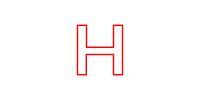
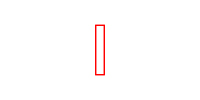
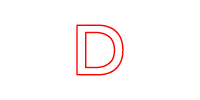

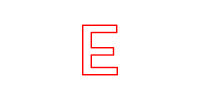
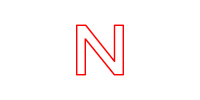
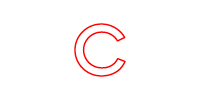
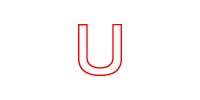
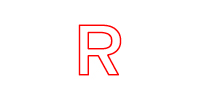




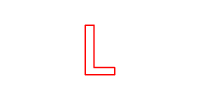

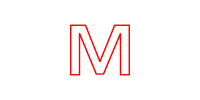




An outline of the project Hidden Curriculum
The art project Hidden Curriculum revolves around the question how high school students understand, engage with, and ultimately investigate a so-called hidden curriculum in their specific everyday school environment. In the context of this project, the term 'hidden curriculum' has been understood as everything that is learned in school next to the official curriculum.
The project's claim has been that there is other knowledge transferred to following generations beyond what is reproduced in schoolbooks through the so-called 'official canon'. Rather, a whole range of unintended or unrecognized, even undesired forms of knowledge, values, unofficial abilities and talents are generated: authority dependency, pressure to perform, role models, standardized thinking, etc. are taught and learned, without this being necessarily noticed.
These other forms of knowledge are not really fixed in books, curricula and school materials (at least not explicitly), but they form a structural component of the school system and everyday life in school. These other forms of knowledge are investigated in the Hidden Curriculum project. They include on the one hand various kinds of actions and tactics that challenge enforced cultural values and attitudes (e.g. punctuality, tidiness, etc.). On the other hand the HC project looks at practices that students develop in order to cope with the requirements in everyday life in school, investigating forms of subordination, hierarchies and silent violence.
In very general terms the project deals with the realm of communication within school, trying to address its blind spots, hidden niches and mute practices that are contained within everyday routines at school. Departing from these rather general considerations and assumptions, the project tries to create a framework that encourages students to investigate aspects of a hidden curriculum in their specific school context. The recurring question posed in the project has been: how would you as students of this specific school try to investigate a hidden curriculum?
The format of the HC project is workshop-based. The workshop series have been realized with students between the age of 13 and 17 years. It took place seven times since 2007 in different countries such as France, Germany, the Netherlands and the United Kingdom. In order to give an impression of the different HC projects that have been realized till now, I list the different projects including the involved school and art institutions, the year and place of the project:
> Hidden Curriculum … produced by Casco, Office for Art, Design and Theory, Utrecht. Participating students from Gerrit Rietveld College and Amadeus Lyceum, Utrecht 2007.
> Hidden Curriculum / Beyond Common Sense … together with Ferenc Sébo, in the context of Winterakademie 2, "Let's say ordinary is different", (curated by Claudia Hummel), Theater an der Parkaue, Berlin 2007.
> Hidden Curriculum / Disbeliefs … in the context of a collaboration with Lawrence Lemaoana and Mary Sibande, Paris/Johannesburg, 2007.
> Hidden Curriculum / May We Disturb You? … in the framework of a collaboration for Walden #3 (curated by Christiane Mennicke and Ulrich Schötker) and Carl-Orff-Gymnasiums, Munich 2009.
> Hidden Curriculum / Mobile … in the context of the exhibition The World in Your Hand, (curated by Miya Yoshida), with participating students from youth programme, Kunsthaus Dresden, 2010.
> Hidden Curriculum / (In)Visibilities … produced by The Showroom, London. Participating students from Quintin Kynaston School, London 2011-12.
> Hidden Curriculum / (In)Visibilities … produced by The Showroom, London. Participating students from Paddington Academy, London 2011-12.
> Hidden Curriculum / In Search of the Missing Lessons … commissioned for the Whitechapel Gallery's Artist in Residence program with St Paul's Way Trust School, London 2012-13.
> Hidden Curriculum / In Search of the Missing Lessons … commissioned for the Whitechapel Gallery's Artist in Residence program with Cumberland School, London 2012-13.
> Hidden Curriculum / Excuse Poems … commissioned by City of Women Festival, Ljubljana, 2021. Produced by Mesto žensk/City of Women/in collaboration with Ljubljana Puppet Theatre.
The aim of the different workshop series has been that in groups the students develop ideas that respond to the question what 'hidden curriculum' means and does. Using performance, interventions, and interview-formats, the students comment on conventions and unwritten rules in their direct environment. It is a 'thinking by doing' process that tries to situate the hidden curriculum in the specific circumstances of the students' schools and within the conditions of each workshop series at a certain time and place.
The different workshops encourage the pupils to investigate their surroundings, socio-political structures that play a role in school and their own actions and practices within them. Students' preferred media to work with have been interventions, performances, and interview-based approaches. This prompted the decision very early on to document the different formats with video, audio, and photography by the students themselves. The students get a basic introduction into using video cameras and sound equipment, and discussions are held around what it means to document.
Throughout the years the HC project has materialized into an archive of short video and audio sequences and photos that has become an extensive collection of material due to the engagement of different student groups during the different workshop series. As agreed by the different student groups the archive is partly public and partly secret.
Over the course of the years a set of conditions emerged that helped to articulate the framework of the project in order to become a challenging factor on the level of the workshops with the students, the school principles and administration, and the different art spaces involved. One of the conditions for the schools entails that the workshops with the students have to take place during regular school hours. We would meet at least over the course of six months in regular meetings no less than two to three hours a week. On the part of the school this would demand that the workshops would not only take up the hours of the art lessons, but the HC workshops would also run parallel to other subjects like maths, languages, history, etc. Placing the HC workshops outside regular school hours (as after-school activity) would conflict with the project's aim to address and investigate a hidden curriculum during school. This is also the reason why the workshop hours should run parallel to other subjects, aiming to address a hidden curriculum as well in other subjects besides of art classes. On the part of the teachers this condition triggered comparisons of the HC project to other subjects with the question of how much time (that is eventually taken away from other subjects) should be dedicated to this project next to the art lessons. An important question has been how much the HC project could live up to the relevance of subjects like maths, natural sciences, history, or languages. Similar discussions have taken place amongst the students during the project comparing the HC project to other subjects, discussing its relevance and impact on different subjects.
One of the framing demands of the HC project towards the art organizations has consisted in running the project not (only) within the educational program of the art organization, but as an integral part of the 'normal' art program. Placing the project as an educational project seems self-evident and highly appreciated from the point of view of the art organization, since this would allow to increase their funding possibilities. However, it also runs the risk that the questions and ideas raised in the project are hardly taken seriously in the arts because the project gets pushed into the margins of the educational realm and becomes invisible within a wider perspective in the field of arts. What evolved out of working on these organizational frameworks, has become crucial for the HC project on many levels, namely the investigation of hierarchies of knowledge and the experience of power (in school and art discourses). To summarize, the framework of the HC project is crucial since it provides the possibility for the students, the school and art organizations and myself to find out about the project's context, the specific understandings of and approaches towards a hidden curriculum.
Annette Krauss
2014
Links
> … to be hidden – part 1
> … to be hidden – part 2
> A Political Cup of Tea
> (In)visibilities
> Education Philosophy and Hidden Curriculum
> Books from the Future
> Documenting Secrets
> St. Pauls Way Trust School
> Hidden Curriculum at Škuc Gallery/ Ljubljana
> Whitechapel Gallery – Artists in Residence
> Tables and Chair to Live with
> Undercover Studies (Gallery)
> Double-edged Sword
Gifts
> HC Wall Drawing Ljubljana
> HC Wall Drawing Ljubljana Eng Text
> Spaces of Unexpected Learning A Conversation between Annette Krauss, Emily Pethick & Marina Vishmidt (I)
> Spaces of Unexpected Learning A Conversation between Annette Krauss, Emily Pethick & Marina Vishmidt (II)
> Hidden Curriculum Publication 2008
Hidden Curriculum Archive
Throughout the years the HC project has materialized into an archive of short video and audio sequences and photos that has become an extensive collection of material due to the engagement of different student groups during the different workshop series.
As agreed by the different student groups the archive is partly public and partly secret. This means that some of the contributions are allowed to be shown in public, others are secret and only used in the workshops with the students. The video clips have been developed by participants in the workshops in Utrecht, Berlin, Paris, Munich, Dresden and London. Titles in grey can only be accessed in workshops.
#1 No Clue (remains secret)
#2 Title (remains secret)
#3 Title (remains secret)
#4 I am feeling so sick (remains secret)
#5 Everything was a big misunderstanding (remains secret)
#6 Title (remains secret)
#7 Title (remains secret)
#8 Music is my life
#9 Inventing Names (remains secret)
#10 Switching Teachers (remains secret)
#11 The best music mix (remains secret)
#12 Close to the limit (remains secret)
#13 One has to learn it by heart (remains secret)
#14 Another mobile method (remains secret)
#15 Title (remains secret)
#16 Title (remains secret)
#17 Arriving Late (remains secret)
#18 Multiple Choice (remains secret)
#19 Turning a Blind Eye
#20 White on White stays White
#21 Feeling Guilty (remains secret)
#22 No Access
#23 Comprehension (remains secret)
#24 Vera is ill
#25 Stuck in the Shower
#26 Shoes in the Bushes
#27 Albert Heijn
#28 Calculation (remains secret)
#29 Maths (remains secret)
#30 Halo
#31 Screenshot
#32 Excuses
#33 Uniform
#34 Pregnant for 20 Minutes
#35 The Pen Tactic
#36 Snatching Tickets
#37 Student Card
#38 Outbox Messages
#39 Self Paying Taxi (remains secret)
#40 The Ingredients
#41 Title (remains secret)
#42 How students get a A**
#43 Sticky Notes
#44 Missing Arm
#45 C.T.D.C.(1) (Cheating Techniques in Different Countries)
#46 C.T.D.C.(2) (Cheating Techniques in Different Countries)
#47 C.T.D.C.(3) (Cheating Techniques in Different Countries)
#48 C.T.D.C.(4) (Cheating Techniques in Different Countries)
#49 To be a teacher or not to be
#50 Look Unique
#51 Uniform is never Cool
#52 My second best friend
#53 Miss
#54 Don't judge a Book by its Cover
Site built and designed by VARV VARV 2015.